
Will an outdoor hot tub break if it freezes?
2024-03-01 15:30The phenomenon of outdoor hot bathtubs freezing in winter has attracted widespread attention. With the popularity of outdoor leisure life and people's pursuit of healthy life, outdoor hot tub as a leisure equipment has been favored by more and more people.
However, in cold climate conditions in winter, outdoor hot tubs are prone to freezing, which brings certain troubles to people's lives. This article will discuss the concerns caused by outdoor hot tub freezing problems and related solutions.
1. Why is freezing in an outdoor hot bathtub a cause for concern?
The reason why outdoor hot tub freezing causes concern is that it may cause damage to the equipment, thereby affecting the user experience. Under cold weather conditions in winter, the water in the outdoor hot tub is easy to freeze. If timely treatment or preventive measures are not taken, the freezing phenomenon may cause damage to the pipes, pumps and other equipment of the hot water bathtub, or even cause more serious accidents. Security risks. Therefore, people are very concerned about the freezing problem of outdoor hot tubs and hope to find effective solutions to ensure the normal operation and safe use of the equipment.

Potential risks of safety hazards
Icing problems will not only affect the normal use of equipment, but may also cause safety hazards, especially for equipment such as outdoor hot tubs that are exposed to the natural environment. Therefore, people are paying special attention to the freezing problem of outdoor hot bathtubs, and hope to know how to effectively prevent and deal with this problem to ensure the safety and long-term use of the equipment.
Thoughts on waste of resources
The frozen hot water bathtub also raises concerns about the wise use of resources. A hot water bathtub typically uses a lot of energy to maintain its temperature, but when it freezes, that energy may be viewed as wasted. Society is increasingly paying attention to sustainable development and resource conservation, so a frozen outdoor hot bathtub may be regarded as a waste of resources that cannot be ignored.

2. What impact will outdoor hot tub freezing have on the equipment?
Freezing in outdoor hot bathtubs may have many effects on equipment. First, a frozen hot water bathtub may mean that the heating system is malfunctioning. The heating system is usually responsible for keeping the hot water temperature stable, but if the system fails, the water temperature can drop below the freezing point, causing the hot water bathtub to freeze. This could stem from a faulty heating element, a problem with the temperature sensor, or a faulty electrical system. In this case, it will not only affect the normal use of the equipment, but may also make maintenance a necessary option.
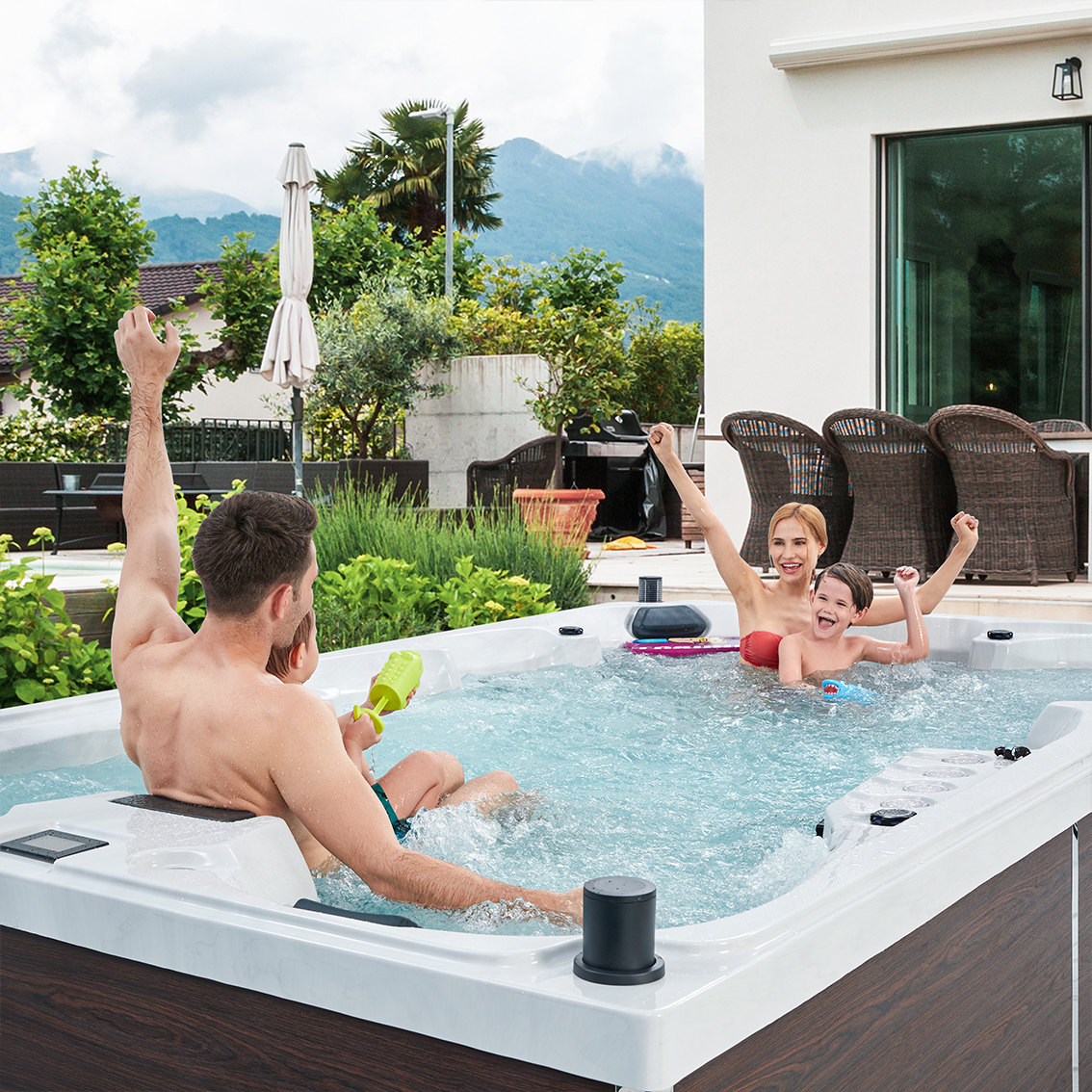
Secondly, freezing in the outdoor hot bathtub may cause damage to components such as pipes and valves. When water freezes, it expands, potentially causing ruptures in pipes and other equipment components. This kind of damage will not only require repairs to the problems caused by the ice, but may also require more extensive repairs to ensure the stability of the entire system. In extreme cases, if ice causes a pipe to burst, water can leak, increasing the risk of further damage to the equipment.
Finally, a frozen hot water bathtub can cause equipment safety hazards. The presence of ice increases the risk of slips and falls, especially when users attempt to use a hot water bathtub. This poses a threat to the user's security and may also cause damage to the device itself. If a user falls on an icy outdoor hot tub, various parts of the device may be hit or squeezed, causing device failure.
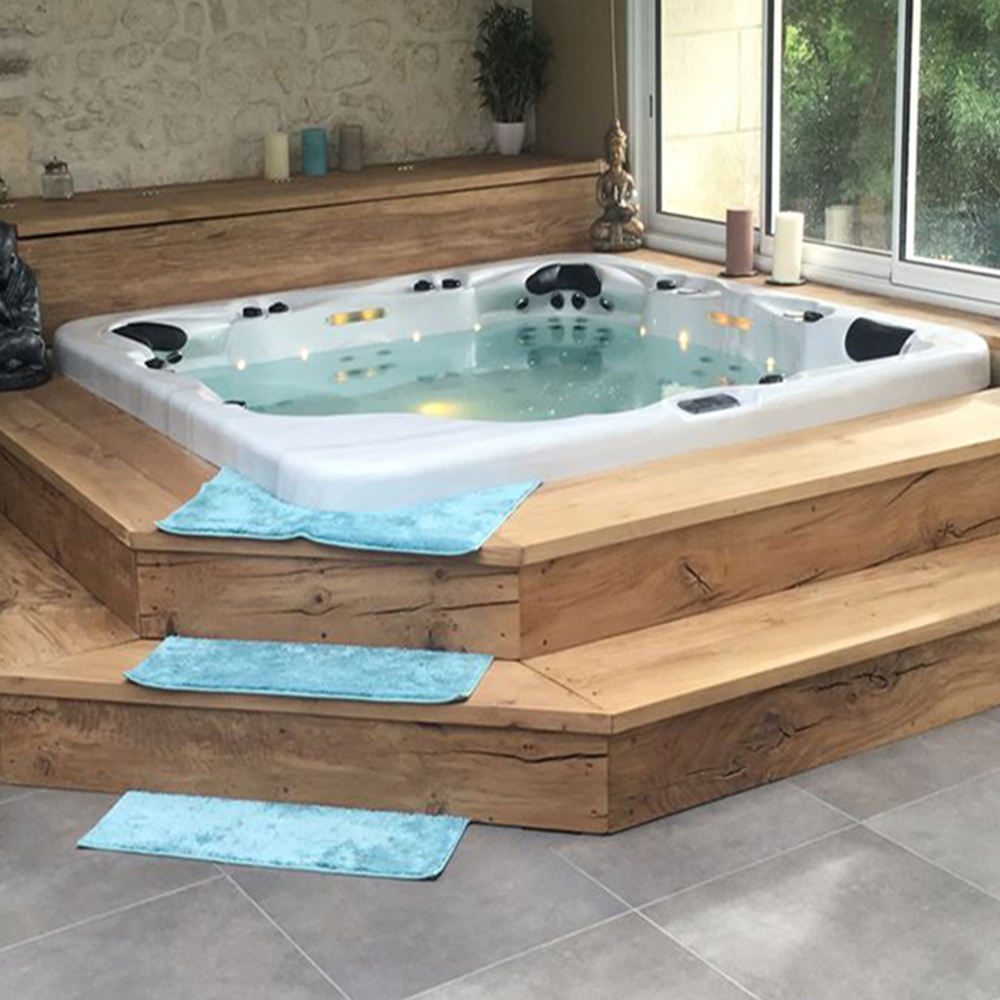
3. How to prevent damage caused by freezing of outdoor hot bathtub?
To better protect your outdoor hot bathtub from damage caused by freezing, here are some suggestions and precautions.
Use heating equipment and stir the water regularly
In extremely cold environments, you can consider installing special heating equipment, such as heaters or heat pumps, to ensure that the hot water tub outdoor water temperature is maintained within a suitable water temperature range, usually 38°C to 40°C. Raising the water temperature will help slow down the formation of ice and prevent ice from forming on the inner surface of the tub. This device can provide extra insulation on cold nights or freezing weather, preventing the water temperature from dropping too quickly. Stir the water in the hot water bathtub frequently to prevent the surface water temperature from being low and ice forming easily. By regularly stirring the water, you can distribute the hot water evenly and reduce the chance of freezing. This simple measure can effectively maintain water temperature stability.
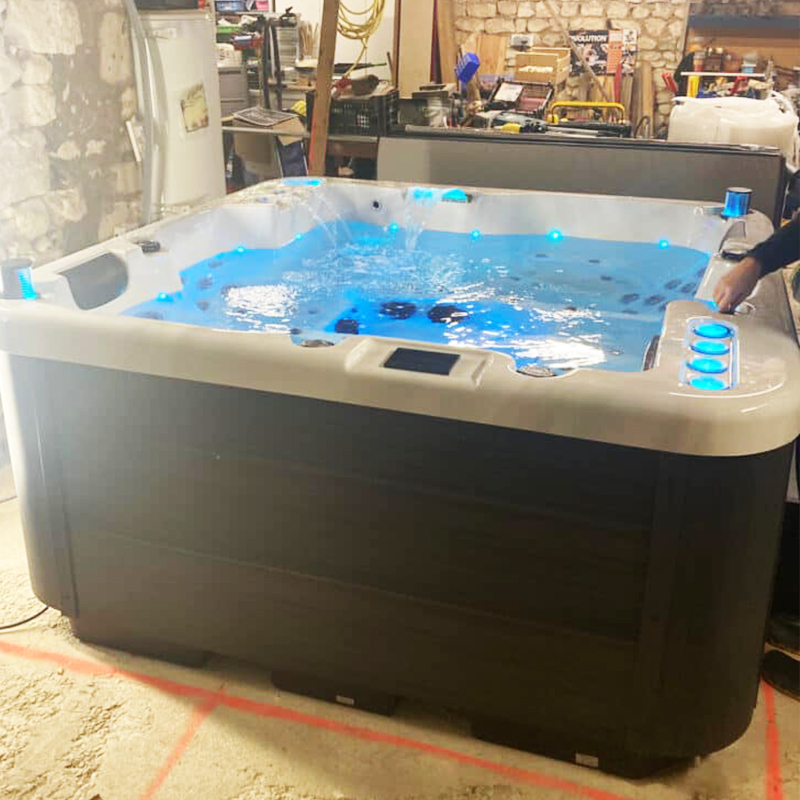
Regular inspection and timely removal of snow and ice
It is crucial to ensure that the hot water tub outdoor's water pump and pipes do not freeze. Regularly checking the operation of water pumps and pipes, especially in cold weather, can prevent damage to equipment caused by ice. Using antifreeze can help prevent pipes from freezing and keep your system functioning properly. In areas covered by heavy snow, clear the snow around the hot water bathtub promptly to prevent snow from accumulating on the surface of the bathtub. Also, be careful when handling the ice so it doesn't cause additional stress and damage to the tub. Using a de-icer or heater can help remove snow and ice to ensure proper operation of the equipment.
Place the bathtub in a place that is protected from wind and snow
Choosing a location that is sheltered from wind and snow to place the hot water tub outdoor can reduce the impact of extreme weather. Installing windproof baffles or building simple awnings outdoors can help reduce the impact of cold wind and snowfall on the bathtub and reduce the risk of freezing.
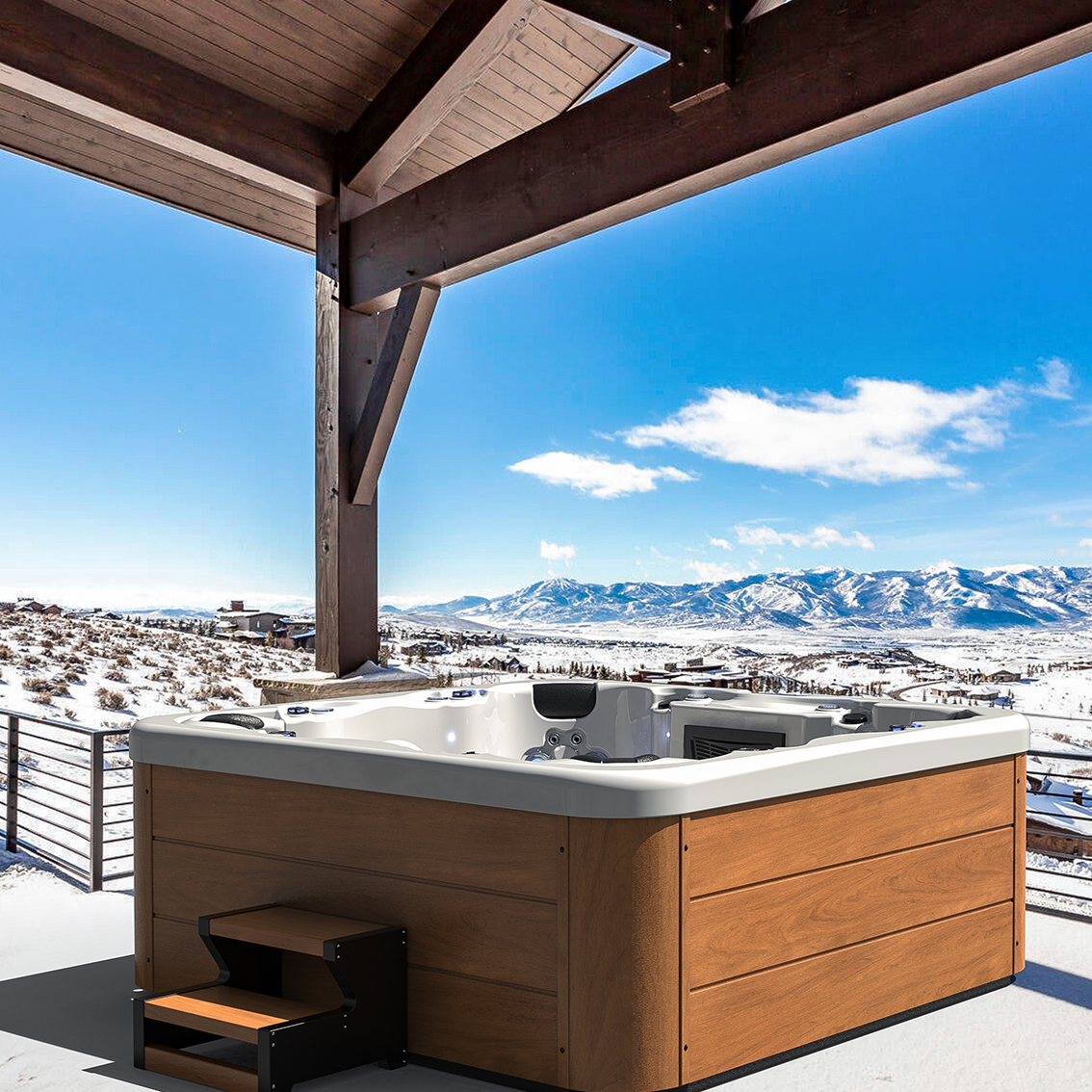
4. Has the outdoor hot bathtub been designed with freezing issues in mind?
In the design of outdoor hot bathtubs, the problem of freezing is usually taken into consideration, and some measures are taken to prevent damage caused by freezing. For example, when designing water pumps, pipelines and other equipment, the impact of freezing on the equipment will be taken into consideration, and cold-resistant and low-temperature-resistant materials and technologies will be selected to ensure the normal operation of the equipment in cold weather conditions.

In addition, some hot water tub outdoor will also be equipped with heaters, insulation covers and other equipment to increase the water temperature and prevent the water from freezing. In addition, when designing the shell and structure, the impact of ice on the equipment will also be considered, and some measures will be taken to enhance the stability and durability of the equipment.
In the design process of hot water tub outdoor, the problem of icing is often fully considered. Designers will choose cold-resistant materials and design corresponding heating and insulation devices to ensure the normal operation of the equipment in cold environments. In addition, the stability and durability of the equipment will be enhanced by strengthening the structure and optimizing the appearance to cope with the challenges that ice may bring.
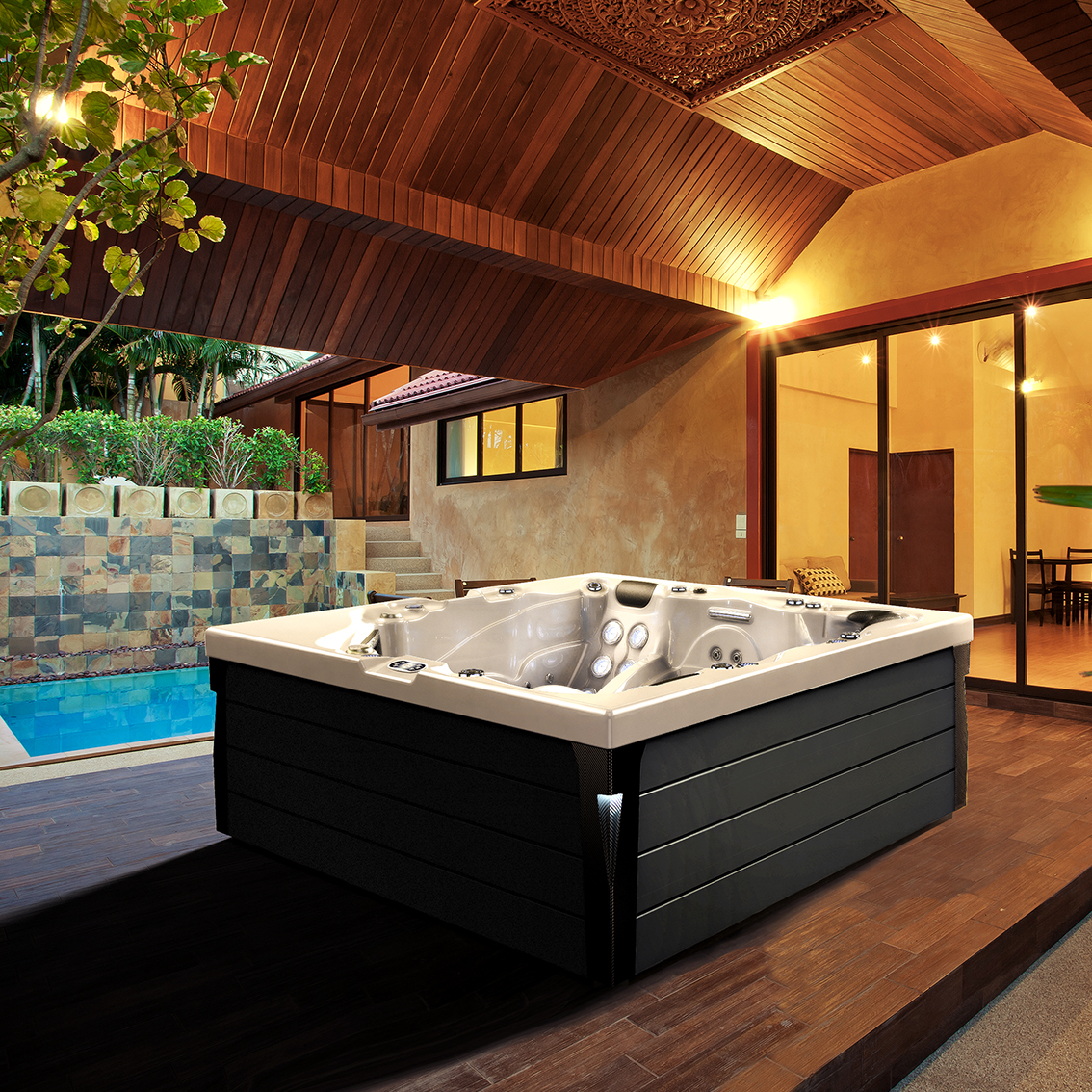
5. How to correctly deal with the freezing problem of outdoor hot tub?
Correctly handling the freezing problem of hot water tub outdoor is the key to ensuring the safety and normal use of the equipment. First of all, if you find that the hot water bathtub has frozen, do not force the equipment to avoid further damage. You can start by taking your hot tub out of use and heating it to the right temperature to melt the ice.
Secondly, you can use professional tools or heating equipment to heat the environment around the hot water bathtub to accelerate the melting process of ice. In addition, you can use hot water or salt water to melt the ice, but you need to be careful not to use too hot water to avoid damage to the equipment. Finally, after the icing problem is dealt with, the equipment can be inspected and maintained to ensure the normal operation and use of the equipment.

Summarize
The freezing problem of outdoor hot bathtub has attracted people's attention, which may cause damage to the equipment and affect the user experience. In order to prevent and deal with icing problems, a series of preventive measures and correct handling methods need to be taken to ensure the safety and long-lasting use of the equipment. At the same time, when designing and purchasing hot water tub outdoor, the problem of icing should also be considered, and appropriate equipment and materials should be selected to ensure the normal operation and use of the equipment under various weather conditions.
